MasAgro now core to sustainable agricultural development policy in Puebla, Mexico
Increasing the production of maize and wheat, counteracting the threat of food crises, and addressing the challenges of climate change for agriculture in Mexico: these are the objectives of MasAgro (the Sustainable Modernization of Traditional Agriculture), a collaborative initiative led by SAGARPA (the Mexican Ministry of Agriculture, Livestock, Rural Development, Fisheries and Food) and CIMMYT, and officially launched in April this year.
On Tuesday 05 July 2011, Puebla became the first Mexican state to join MasAgro, upon signing an agreement with CIMMYT for joint coordination of the project. The partnership will promote modern agronomic techniques, such as conservation agriculture, and encourage the use of improved seed adapted to high-potential agro-ecological areas.
The signing ceremony was held in the “Edificio de Protocolos” building in the city of Puebla. Rafael Moreno Valle, the State Governor, said that MasAgro Puebla will have a significant impact on the livelihoods of small farmers in the state, with Puebla’s state-level efforts reinforcing those of SAGARPA at the federal level to boost the impact of the program. Moreno Valle said the principal objective of the agreement was for the farmers of Puebla to develop their production capacities and ensure the sustainability of the rural environment, but he was also confident that Puebla would contribute to meeting the global challenge of doubling food production.
For his part, Francisco Mayorga Castañeda, Mexican Secretary of Agriculture, spoke of MasAgro as “the most important agricultural policy of recent years in Mexico.”
Representing CIMMYT at the event were Scott Ferguson, deputy director general for support services, and Bram Govaerts, leader of the Take it to the Farmer component of the MasAgro program. Explaining how MasAgro works in practice, Govaerts mentioned that, to date, CIMMYT has coordinated more than 40 training events in agricultural techniques, attended by more than 3,500 farmers who grow rainfed maize and small grain cereals in the lowland and highland valley regions of Mexico.
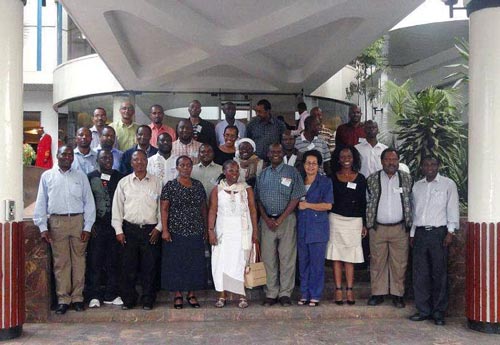 SIMLESA strengthens project monitoring and evaluation capacity. A Monitoring and Evaluation (M&E) Workshop was held in Nairobi, Kenya, during 13-17 June 2011 as part of the Sustainable Intensification of Maize-Legume cropping systems for food security in Eastern and Central Africa (SIMLESA) project. It was facilitated by a team from the Association for Strengthening Agricultural Research in Eastern and Central Africa (ASARECA) and led by Enock Warinda.
SIMLESA strengthens project monitoring and evaluation capacity. A Monitoring and Evaluation (M&E) Workshop was held in Nairobi, Kenya, during 13-17 June 2011 as part of the Sustainable Intensification of Maize-Legume cropping systems for food security in Eastern and Central Africa (SIMLESA) project. It was facilitated by a team from the Association for Strengthening Agricultural Research in Eastern and Central Africa (ASARECA) and led by Enock Warinda.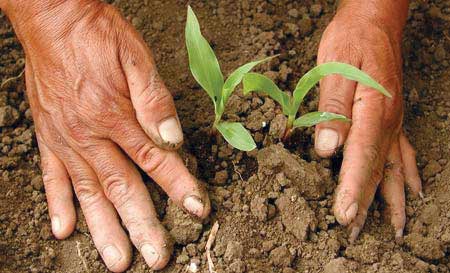 A new era began this week with the launch of the CGIAR Research Program MAIZE, a US$170 million global alliance to expand and accelerate research into maize, on 06 July 2011. The announcement was made during a celebration of the CGIAR’s 40th birthday, held at the World Bank headquarters in Washington, marking a new direction for the CGIAR and demonstrating that after four remarkable decades it remains vigorous and committed to addressing emerging challenges.
A new era began this week with the launch of the CGIAR Research Program MAIZE, a US$170 million global alliance to expand and accelerate research into maize, on 06 July 2011. The announcement was made during a celebration of the CGIAR’s 40th birthday, held at the World Bank headquarters in Washington, marking a new direction for the CGIAR and demonstrating that after four remarkable decades it remains vigorous and committed to addressing emerging challenges.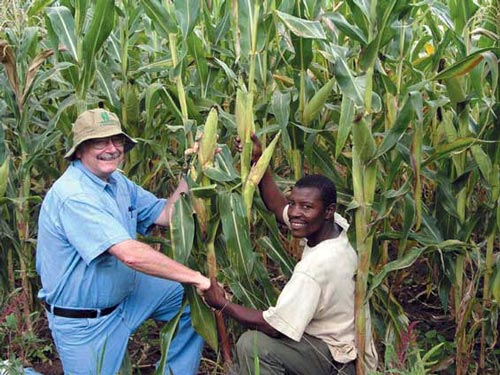 After a successful 37-year career and living on 4 continents, most people welcome retirement with open arms. Wayne Haag is not most people. Mission-oriented since childhood, the only question is, where will he end up next?
After a successful 37-year career and living on 4 continents, most people welcome retirement with open arms. Wayne Haag is not most people. Mission-oriented since childhood, the only question is, where will he end up next?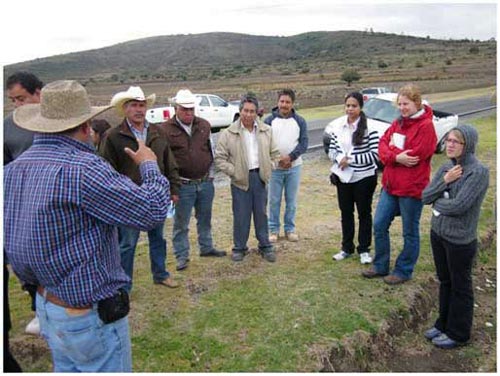 India has recently experienced a boom in cell phone use in the agricultural sector—disseminating information on anything from technology to agronomic practices, weather, or even market prices. Investigating this recent trend’s presence in Mexico, on June 26 a team of CIMMYT socioeconomists including Tina Beuchelt, Surabhi Mittal, Dagoberto Flores, and Jennifer Zehner visited the Chimalpa Valley in the municipality of Apan, state of Hidalgo, Mexico, an area largely known for being a barley production belt, to gauge the prevalence of cell phone use for agricultural purposes.
India has recently experienced a boom in cell phone use in the agricultural sector—disseminating information on anything from technology to agronomic practices, weather, or even market prices. Investigating this recent trend’s presence in Mexico, on June 26 a team of CIMMYT socioeconomists including Tina Beuchelt, Surabhi Mittal, Dagoberto Flores, and Jennifer Zehner visited the Chimalpa Valley in the municipality of Apan, state of Hidalgo, Mexico, an area largely known for being a barley production belt, to gauge the prevalence of cell phone use for agricultural purposes.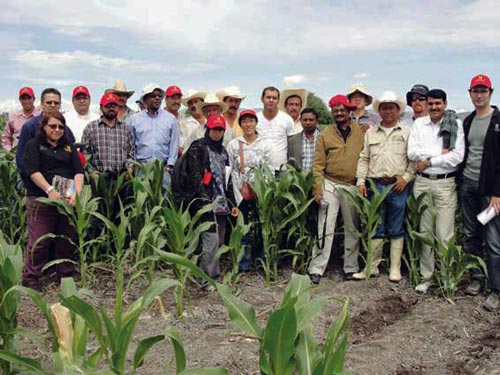 “It is very difficult to find conservation agriculture machinery. You have to go to China or India to get it,” said Mahesh Kumar Gathala, new CIMMYTBangladesh-based cropping systems agronomist for South Asia. Gathala, a native of India, was just one of the 15 participants invited to attend a five-week conservation agriculture course at CIMMYT-El Batán, Mexico, where improving machinery and professional capacity were hot topics.
“It is very difficult to find conservation agriculture machinery. You have to go to China or India to get it,” said Mahesh Kumar Gathala, new CIMMYTBangladesh-based cropping systems agronomist for South Asia. Gathala, a native of India, was just one of the 15 participants invited to attend a five-week conservation agriculture course at CIMMYT-El Batán, Mexico, where improving machinery and professional capacity were hot topics.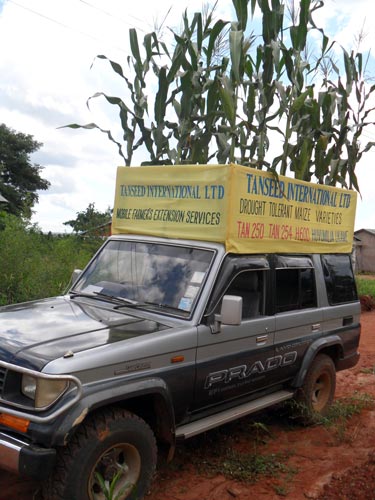 Staff of this Tanzanian seed company drove a vehicle topped with Tanseed drought tolerant varieties in potters through the city’s crowded streets during the nation’s Worker’s Day Celebration. The crowd cheered as the vehicle entered Jamhuri Stadium and passed in front of the chief guest, Tanzanian President Jakaya Kikwete. And because the event was televised live on three national stations, the message about drought tolerant maize was likely viewed by a large audience.
Staff of this Tanzanian seed company drove a vehicle topped with Tanseed drought tolerant varieties in potters through the city’s crowded streets during the nation’s Worker’s Day Celebration. The crowd cheered as the vehicle entered Jamhuri Stadium and passed in front of the chief guest, Tanzanian President Jakaya Kikwete. And because the event was televised live on three national stations, the message about drought tolerant maize was likely viewed by a large audience.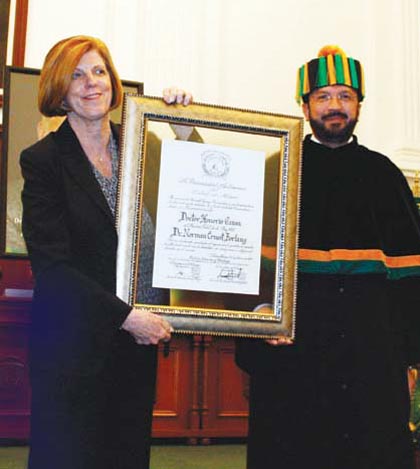 On Friday 29 April 2011, Nobel Prize Laureate and father of the Green Revolution, Norman E. Borlaug, was awarded an honorary doctorate (postmortem) from the Universidad Autónoma del Estado de Mexico (UAEM) for his lifelong work to improve modern agriculture.
On Friday 29 April 2011, Nobel Prize Laureate and father of the Green Revolution, Norman E. Borlaug, was awarded an honorary doctorate (postmortem) from the Universidad Autónoma del Estado de Mexico (UAEM) for his lifelong work to improve modern agriculture.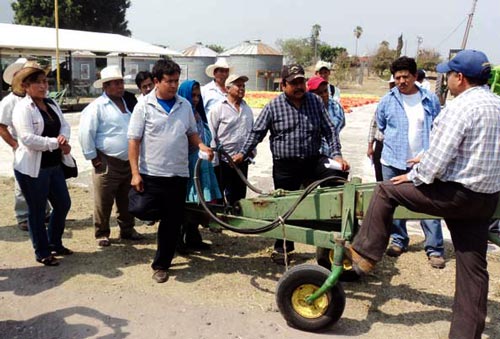 Óscar Bañuelos, superintendent at Tlaltizapán, began the course by welcoming all the participants. Bañuelos, who also attends Conservation Agriculture‘s technical certification course, applies CA technology throughout the season as a way to reclaim lots in disrepair and as an agronomic alternative to save on production costs.
Óscar Bañuelos, superintendent at Tlaltizapán, began the course by welcoming all the participants. Bañuelos, who also attends Conservation Agriculture‘s technical certification course, applies CA technology throughout the season as a way to reclaim lots in disrepair and as an agronomic alternative to save on production costs.